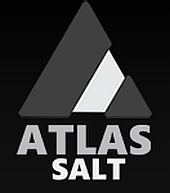 Sage Gold Moves Toward Production
Sage Gold Moves Toward Production
A current article from Jay Taylor’s Gold, Energy and Tech Stocks – “Sage Gold Moves Toward Production”:
https://gallery.mailchimp.com/aede4cbd755c492a360baa9ce/files/b0c61fcb-2ff9-4b62-8528-b1447d859d14/SAGE_GOLD_2017_09_01_Article_Reprint.pdf
(Traded Toronto:SGX/USOTC:SGGDF; 76.6 million shares @ US$0.15 = US$12 million market cap) – In my initial coverage of this company on March 24, 2017, I summarized this story as follows: “With $60 million pumped into exploration and development of the Clavos Property by St. Andrews and with lifeof-mine mill availability just 10 kilometers away, the fully permitted Clavos Mine offers near-term production and positive cash flows that should drive these very unrecognized shares to much higher levels. Given that view, I am adding Sage Gold to this letter.”
This week, management has taken a final step toward entering production when it announced the final $3.26-million draw of a $9.65-million gold streaming line with Cartesian Royalty Holdings Pte. Ltd. to fund the fully permitted Clavos Mmine ionto production. Importantly, it has a life-of-mine toll milling agreement with a nearby mill.
As I noted, in my March 24 write-up I said, “I believe there could be considerable upside from a higher grade than the average 4.75 g/t factored into the PEA, for the following reasons:
1. In 2003, a lower tonnage calculation by Roscoe Postle Associates back in 2003, they calculated a grade of 7.3 g/t for 753,000 tonnes in the indicated category and 8.9 g/t for 452,000 tonnes in the inferred category. With gold at that time trading at around $400/oz., the grade would have had to be higher then to be economically viable. That suggests that if need be, more selective high-grade mining might be possible if necessary, though with the price of gold now more than 10% higher than what was factored into the PEA, that wouldn’t seem necessary.
2. The Clavos gold mineralization is very coarse so that any statistical analysis is faced with the problem of accurately calculating grade. Based on their observations, management is convinced that a higher cut grade will be established in ore calculations in the future. For example, one intersection shown in the illustration on your left was cut at 65.3 g/t where the actual grade was 374.1 g/t over 0.7 meters. To what extent these much higher actual grades occur throughout the deposit is a question that will be answered when the company begins shipping 500 TPD to the Primero Mill. That should be very helpful in getting a better understanding of the nugget effect in more accurately calculating grades. A past experience was brought to mind because it reminded me of a discussion I had with Rob McEwen of Goldcorp. Rob told me that the grades at his company-making Red Lake Mine would end up being much higher than what was built into the bankable feasibility study. Sure enough, as memory serves me, it was over 1 oz./ton higher than predicted. In speaking to management of Sage, they are confident actual grade will be considerably higher than the 4.75 g/t. Time will tell if they are right and to what extent they are right. But obviously if average grade turns out to be higher that will be very good news.”
And, I would like to mention that the company has encountered very encouraging drill results related to grade thickness, such as 17.78 grams per tonne gold over 4.0 meters and 10.59 g/t Au over 1.9 meters. And management also just announced that exploration drilling on the 240-meter level will commence shortly to test the high-grade zones between the 250-meter to 700-meter elevations principally targeting the historical Kinross Hole KC 99-137 (61.59 g/t over 3 meters; see press release of May 3, 2017). The company expects to be dewatered to the 261 level by mid September. The 261 level was developed but not mined by the previous owner, with sample grades of 19.55 grams per tonne gold.
Sage currently plans to complete a reserve estimate and a prefeasibility study regarding the Clavos Project. However, I’m expecting some sort of test mining production before the end of this year to take place, in part because it is required under its financing agreement with Cartesian Royalty to begin delivering 15% of gold production no later than December 31, 2017. I gathered that is the case as I read the following words in the company’s September 1, 2017, press release: “In the event that a production decision is made that is not based on a feasibility study of mineral reserves demonstrating economic and technical viability prepared in accordance with National Instrument 43-101, readers are cautioned that there is increased uncertainty and higher risk of economic and technical failure associated with such production decisions.” That certainly sounds like “cover your posterior end” language to me.
In that same press release, management highlighted the following:
• Building a stockpile of potentially mineralized materials on surface and underground for a bulk sample shipment;
• Underground stockpile of broken potential mineralization left by the previous operator;
• Plan an initial mill run in six weeks;
• The underground workings are 87 per cent dewatered with planned drill station to be placed at the 240-meter level at the end of the month to target potential additional high-grade mineralization;
And, Nigel Lees, Sage’s president and chief executive officer, commented: “The reopening of the Clavos mine continues to progress well in terms of dewatering of the existing underground structure, rehabilitation and the development of stoping blocks. Definition drilling, which progressed slowly at first primarily due to shortage of experienced drillers, and equipment is now operating normally. This delay has been offset by the existence of mineralized material previously developed but not mined by the previous owners. Disclosure regarding the stope block definition program will be ongoing as there is currently a backlog of unlogged and unsampled core. We are encouraged by the success of drilling in the grade thickness highs at the 100-meter levels and 150-meter levels east. These holes are part of ongoing drilling into grade thickness highs, which are outside of the resource blocks.”
Nigel also announced that mining has commenced on the 150-east-meter level, the 100-east-meter level, and shortly on the 150-west-meter level and the 200-meter level. Definition drilling is in progress on all dewatered levels down to the 200-meter level. The mine is currently dewatered to the 260-meter level, and dewatering will continue until the 300-meter level (mine bottom) is reached. A list of levels remaining to be dewatered are:
• 240 E level, 240 W level, 240 ACC level, 250-meter level, 259-meter level, 260-meter level, 261-meter level, 280-meter level, 290 DDB level, internal ramp and main ramp.
Applying an 8% discount, the 2013 PEA calculated a pre-tax NPV of $23.2 million and an after-tax NPV of $12.6 million. The pre-tax IRR was 71% and 47% after tax. Those are pretty robust numbers made possible by an initial CAPEX of $14.1 million and a gold price of US$1,500. Keep in mind that at that time, the Canadian dollar and U.S. dollar were at or close to parity, meaning that the study was at approximately C$1,500. This past week when I checked it out, the Canadian dollar price for gold was $1,600, or about C$100/oz. higher than built into the study. But as noted above, my view is that higher grades as well as a scaling up of production could lead to considerably better economics.
It is important for you to realize that Sage will be required to deliver 15% of its gold production to Cartesian Royalty as a means of repaying the $9.65-million funding being used by Sage to launch production. While taking 15% off the top in repayment of the $9.65-million CAPEX funding, from an NPV point of view, it may not be all that bad considering the fact that it will be paid over time. Rather than seeing $9.65 million go out the door on day one, Sage will be required to deliver a minimum of 16,100 ounces from 15% of its production. And while Sage won’t be paid anything for the ounces it delivers to Cartesian Royalty, unlike most royalty arrangements the number of ounces it has to deliver from its Clavos Mine will be capped—so from 15% of production, as soon as 26,000 ounces over that same timeframe. Sage also received an equity investment of $1.85 million from Cartesian, which was in part used to retire some debt on the books of Sage.
Longer term, not to be forgotten is the company’s very promising Onaman VMS Property. But with $60 million pumped into exploration and development of the Clavos Property by St. Andrews and with life-of-mine mill availability just 10 kilometers away, the fully permitted Clavos Mine offers near-term production and positive cash flows that should drive these very unrecognized shares to much higher levels. Given that view, I am reiterating my encouragement to own shares of Sage Gold.
http://www.sagegoldinc.com/news/
































